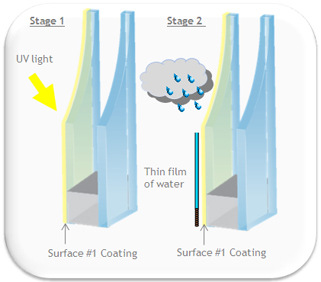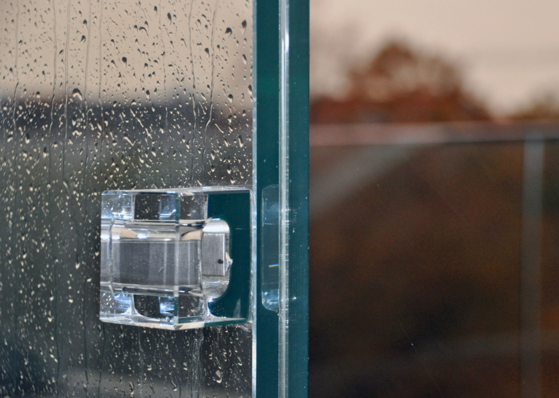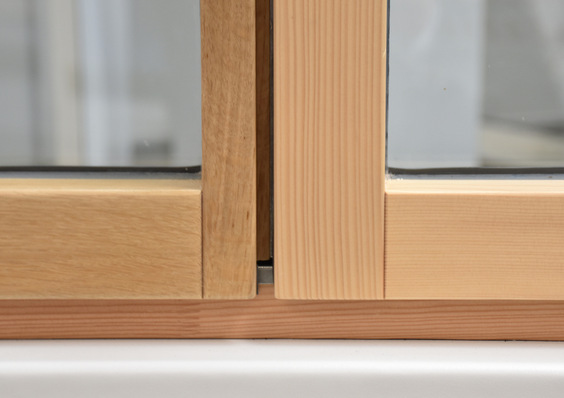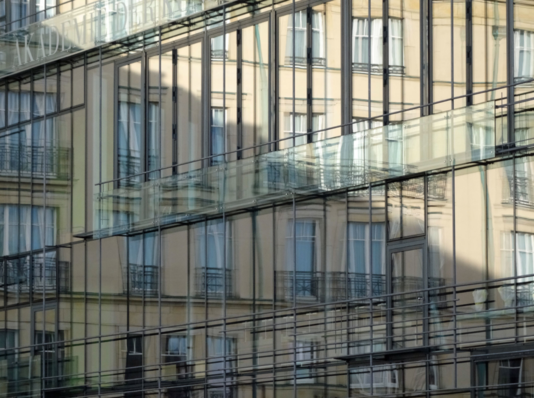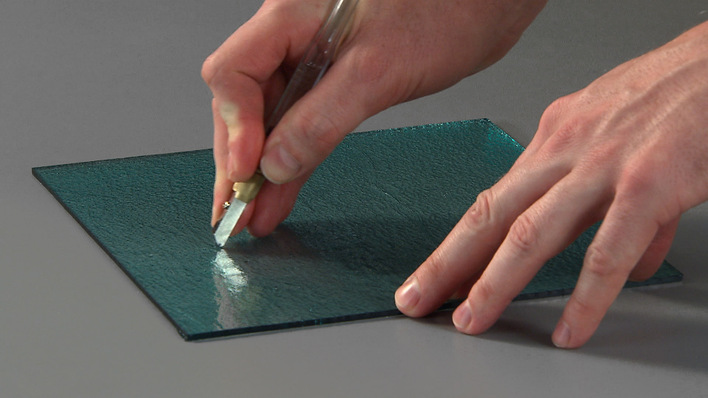Dirt on windows or glass facades due to the effects of the weather not only results in high cleaning costs, it also reduces the light transmission of the glass. Since the 1980s, special hydrophobic (= water-repellent) coatings were initially introduced to the market by some manufacturers, which were mainly used for interior applications due to their non-permanent weather resistance. With these coatings, the surface structure is adjusted on a microscopic level with tiny "bumps" so that drops form like on the leaves of a lotus flower and then run off (lotus effect). In this way, water, lime and dirt particles are carried off more easily.
How do the current self-cleaning glass coatings work?
The newer coating systems have a hydrophilic (= water-attracting) and photocatalytic (= chemically active in the presence of UV light) effect, and they are also more durable than the hydrophobic systems. During hydrophilisation, the surface tension of the water is reduced to such an extent that even the smallest droplets spread out into a film of water and flow over a large area. The dirt on the now larger surface should be washed off more easily and without leaving stains from droplets.
What does photocatalysis mean?
Photocatalysis requires UV light for activation. In this process, the coating reacts with organic dirt substances on the surface and decomposes them. Afterwards, the dirt is washed off by the hydrophilic property of the surface. However, cleaning of the glass surfaces must still be carried out regularly, only less often. However, caution is advised when using silicone-based substances (e.g. sealants, spacers etc.) in combination with self-cleaning coating systems.
What glass can be made self-cleaning?
Glazing with self-cleaning coatings can also be processed into toughened glass and laminated safety glass (LSG). During handling and installation with vacuum handling equipment, it must be ensured that the side with the coating is clean and dry when the suction cup is used. To avoid confusion, this side is usually marked with a label.







